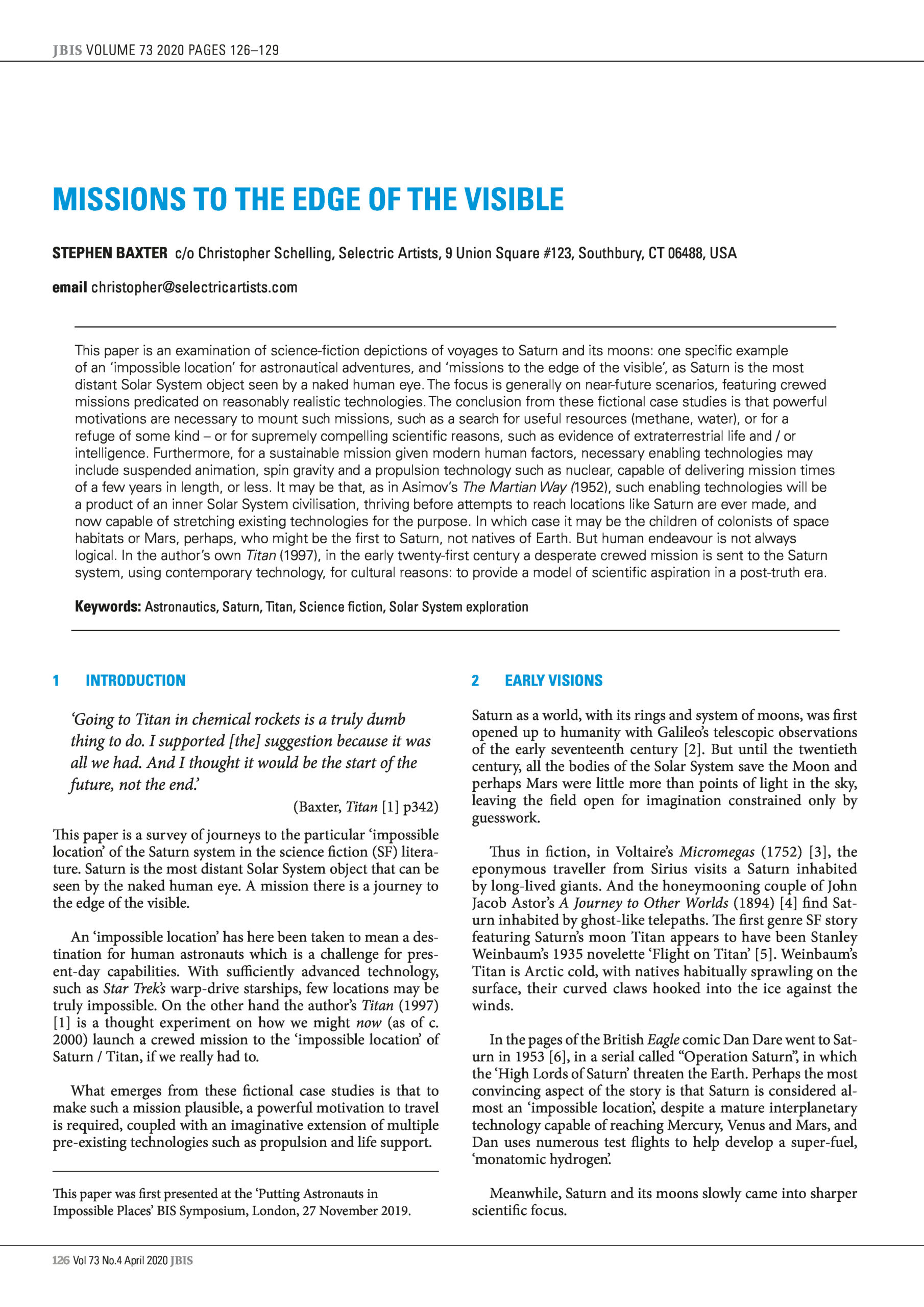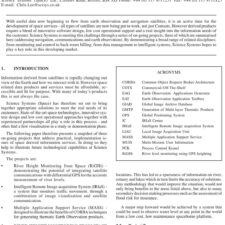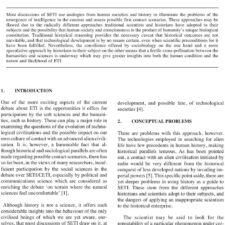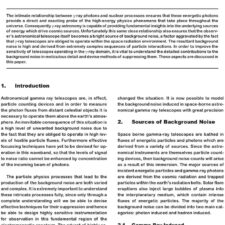Missions to the Edge of the Visible
£5.00
S. Baxter (2020), JBIS, 73, pp.126-129
Refcode: 2020.73.126
Keywords: Astronautics, Saturn, Titan, Science fiction, Solar System exploration
Abstract:
This paper is an examination of science-fiction depictions of voyages to Saturn and its moons: one specific example of an ‘impossible location’ for astronautical adventures, and ‘missions to the edge of the visible’, as Saturn is the most distant Solar System object seen by a naked human eye. The focus is generally on near-future scenarios, featuring crewed missions predicated on reasonably realistic technologies. The conclusion from these fictional case studies is that powerful motivations are necessary to mount such missions, such as a search for useful resources (methane, water), or for a refuge of some kind – or for supremely compelling scientific reasons, such as evidence of extraterrestrial life and / or intelligence. Furthermore, for a sustainable mission given modern human factors, necessary enabling technologies may include suspended animation, spin gravity and a propulsion technology such as nuclear, capable of delivering mission times of a few years in length, or less. It may be that, as in Asimov’s The Martian Way (1952), such enabling technologies will be a product of an inner Solar System civilisation, thriving before attempts to reach locations like Saturn are ever made, and now capable of stretching existing technologies for the purpose. In which case it may be the children of colonists of space habitats or Mars, perhaps, who might be the first to Saturn, not natives of Earth. But human endeavour is not always logical. In the author’s own Titan (1997), in the early twenty-first century a desperate crewed mission is sent to the Saturn system, using contemporary technology, for cultural reasons: to provide a model of scientific aspiration in a post-truth era.





